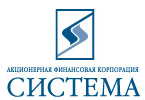Mikhail Vrubel (1856–1910) began his career at the end of the nineteenth century. He found inspiration in Russian fairytales, traditional heroic poems (Bogatyr 1898) and works of literature (The Demon). The one important difference, however, was in his interpretation of these motifs. The hypertrophically exaggerated figure, highly decorative landscape and untraditional format differ Bogatyr from other works based on fairytale themes. Vrubel’s construction of form through brush-strokes in his mosaic Six-Winged Seraph (1904) broke new ground in the representation of the real and imaginary world.
Vrubel was a well-educated artist who gave new meaning to many literary heroes. One of them was Lermontov’s “demon”, which Vrubel believed was often wrongly mistaken for the chort (“horned” in Greek) or devil (“slanderer”). Demon in Vrubel’s translation means “soul”. The image of the “demon” is one of the central themes in Vrubel’s art. The Russian Museum possesses several illustrations to Lermontov’s poem, as well as Flying Demon (1899). Like many other of Vrubel’s works, Flying Demon is associated with the ideas of Symbolism. Incarnation of the spiritual and creation of a new language of symbols was a typical feature of the art of the turn of the century. Vrubel’s demon is “mournful and melancholy … imposing and imperious”. Its outstretched figure soars above the earth, burning eyes scrutinizing the world below. The indeterminate form, intricate colours and unusual composition set this work and many other of Vrubel’s canvases apart in the history of Russian art.





